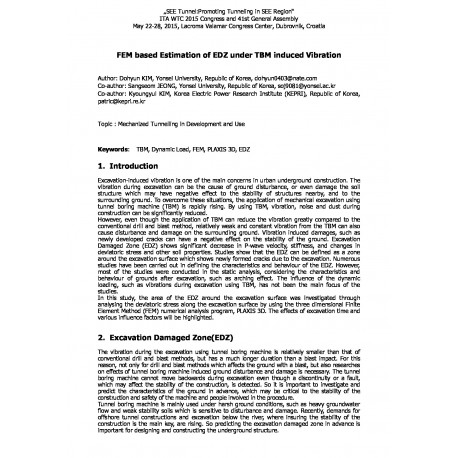Cart
0
0
No document
0,00 €
Total
Document successfully added to your shopping cart
Quantity
Total
There are 0 items in your cart.
There is 1 item in your cart.
Total documents
Total shipping
To be determined
Total
Search & filter
Search for a publication
Search & filter
Viewed documents
FEM based Estimation of EDZ under TBM induced Vibration
wtc2015_full_kim-2
Excavation-induced vibration is one of the main concerns in urban underground construction. The vibration during excavation can be the cause of ground disturbance, or even damage the soil structure which may have negative effect to the stability of structures nearby, and to the surrounding ground. To overcome these situations, the application of mechanical excavation using tunnel boring machine (TBM) is rapidly rising. By using TBM, vibration, noise and dust during construction can be significantly reduced. However, even though the application of TBM can reduce the vibration greatly compared to the conventional drill and blast method, relatively weak and constant vibration from the TBM can also cause disturbance and damage on the surrounding ground. Vibration induced damages, such as newly developed cracks can have a negative effect on the stability of the ground. Excavation Damaged Zone (EDZ) shows significant decrease in P-wave velocity, stiffness, and changes in deviatoric stress and other soil properties. Studies show that the EDZ can be defined as a zone around the excavation surface which shows newly formed cracks due to the excavation. Numerous studies have been carried out in defining the characteristics and behaviour of the EDZ. However, most of the studies were conducted in the static analysis, considering the characteristics and behaviour of grounds after excavation, such as arching effect. The influence of the dynamic loading, such as vibrations during excavation using TBM, has not been the main focus of the Studies.




